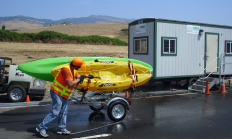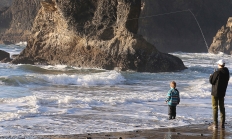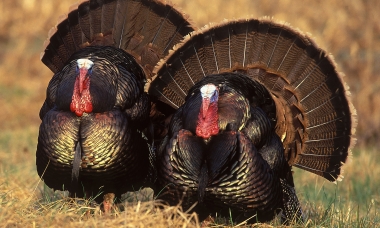
Search myodfw.com

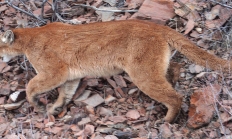
Turkeys make a lot of different sounds, many of which are different in spring and fall. Though most hunters can routinely fill tags by using only two or three sounds, it’s good to know what other sounds turkeys make and why. The hen yelp and variations The most commonly heard sound in the turkey woods is made by the hen, and it’s called a yelp. Toms also yelp, but it’s louder, raspier and often more drawn-out than that of hens. The yelp is usually delivered in a series of one-note tunes. However, yelps can take on various forms. Specifically, there

Mouth calls, also known as diaphragm calls, can seem intimidating but they have some advantages over other kinds of calls. Mouth calls are popular with Oregon turkey hunters because: They're easier to keep dry during wet, spring seasons than are box or slate calls. Since the the call is in your mouth, you can call in a turkey without moving and possible spooking the bird. With practice, they can produce very realistic turkey sounds. Parts of a mouth call There are four parts to a mouth call. Starting at the outside of the call there’s: The tape. The tape stops




Wild turkeys can be eaten either fresh or aged. It all comes down to personal preference, and there are adherents on both sides. Why and how to age a turkey Aging is a process by which changes in muscle enzymes tenderize the meat, and concentrate the flavor. Many hunters prefer to age their meat – both big game and game birds. Others adhere to the motto “fresh birds are the best birds.” Aging is particularly helpful in tenderizing the meat of older toms. If you choose to age your bird, here are some tips: Wild turkey can be aged right

Following droughts in the 1930s that affected most of North America, major conservation efforts, both private and governmental, were enacted to reverse trends of degrading and disappearing wetlands. During this time period there was a major creation and expansion of Federal refuges and State wildlife areas. As the concept of waterfowl flyway management was endorsed and developed, wildlife areas were acquired and managed as part of a larger plan focused on migratory waterfowl needs. Klamath Wildlife Area was one of several wetland-focused wildlife areas established in Oregon. KWA was established in 1958, with primary objectives of protecting and improving waterfowl
You’ll need a way to carry your shells, turkey calls, first aid kit, extra gloves, lunch, water and other gear into the field. The most popular choices are a daypack or a specialized turkey hunting vest. Daypacks are simple and affordable A daypack is a simple and affordable option. It will hold a lot of stuff, most have some pockets to help you organize your gear, and some are hydration bladder compatible to help you stay hydrated during hot, dry hunts. Keep these things in mind when packing a daypack: Make sure the things in your daypack are secure and
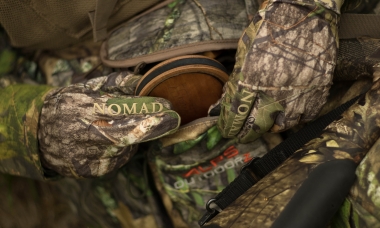

Crabbing and Clamming Dec 4, 2025 Always check for closures at the ODA Shellfish Safety page before harvesting shellfish, which includes clams, crabs and mussels. Announcements Chinese mitten crab found in Willamette River A second confirmed Chinese mitten crab, a prohibited species in Oregon, was found and reported to ODFW on November 17 in the Willamette River near Sellwood Bridge. The first mitten crab was caught on April 22 in the Lower Columbia River. Mitten crabs caused significant infrastructure and ecological damage in and around San Francisco Bay when the population was at its height in the late 1990s and

The development of the WWA began in 1953 with the acquisition of five parcels of land consisting of 4,400 acres. The Department continued to purchase additional lands, acquiring 1,670 acres in 1954 and another 760 acres in 1955. From 1961 to the present the department has purchased or received another 4,219 acres. The wildlife area currently consists of 12,419 acres owned by the department. In addition, the department, through agreements with the Bureau of Land Management (BLM), manage 1,329 acres within or adjacent to the wildlife area. The WWA was established in response to continuing complaints from landowners concerned with

